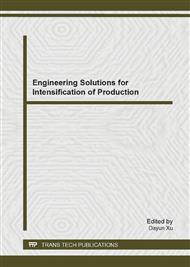p.105
p.111
p.121
p.129
p.135
p.140
p.144
p.148
p.157
Contribution of Magnetostriction to Transformer Core Vibration under DC Bias
Abstract:
An important source of transformer core vibration is magnetostriction of the thin silicon-steel lamination. In the power grid, direct current (DC) may form by solar magnetic storms and DC transmission. Transformer core supersaturation and harmonic increase in current caused by DC bias will intensify magnetostriction and produce additional transformer core vibration. In order to obtain transformer core vibration under DC bias, the magnetization curve and magnetostriction characteristics of thin silicon-steel lamination are measured. Then, this paper establishes a numerical magneto-mechanical strong coupling model including magnetostrictive effect under DC bias for three-phase three-column dry transformers. On the basis of the proposed model, and the measured magnetic characteristics of the thin silicon-steel lamination, transformer core vibration under DC bias and no-load condition has been calculated. In order to verify the proposed model, transformer core vibration under DC bias and no-load condition is studied experimentally. Numerical calculation results together with experimental results confirm the validity of the proposed method.
Info:
Periodical:
Pages:
135-139
Citation:
Online since:
February 2014
Authors:
Price:
Сopyright:
© 2014 Trans Tech Publications Ltd. All Rights Reserved
Share:
Citation:


